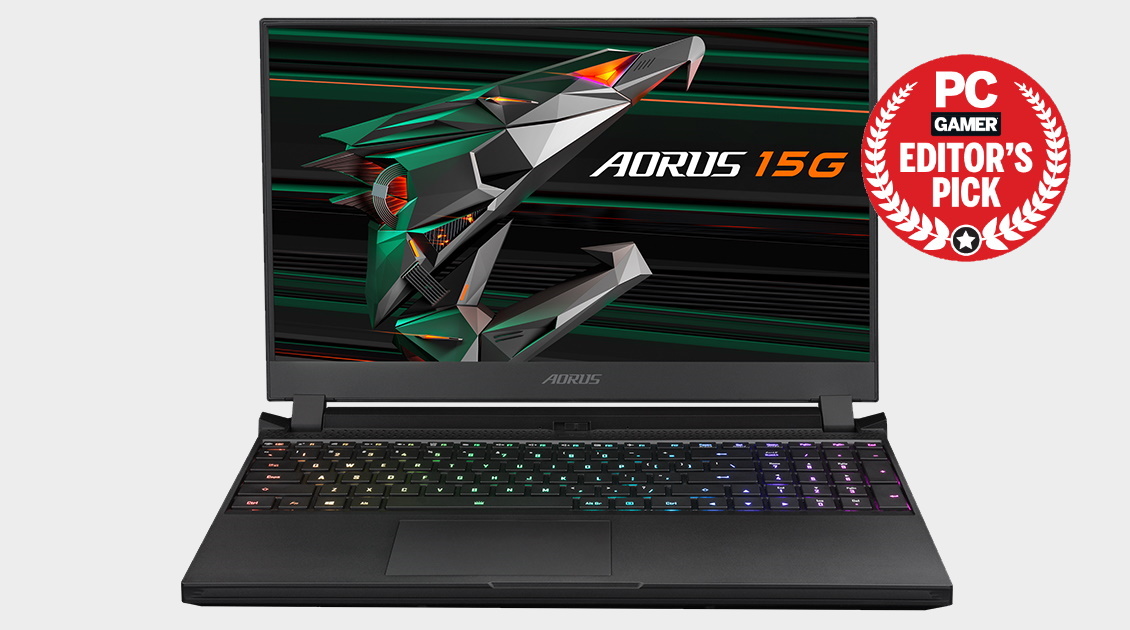Our Verdict
Nvidia's RTX 3070 gets to strut its stuff in this balanced gaming machine that focuses on what matters most, not what simply looks the best.
For
- Great gaming performance
- Vibrant 240 Hz screen
- Quiet running
Against
- Unexciting battery life
- Awful webcam placement
- Doesn't look much
PC Gamer's got your back
The Gigabyte Aorus 15G XC is one of the first gaming laptops to feature the mobile spin of Nvidia's RTX 3070 GPU. It's a whole machine of course, and there's more to it than simply a delivery mechanism for that one component, but as gamers, it's that next-gen graphics card that stands out the most. Does it do enough to make it into our guide for the best gaming laptops though? Time to find out.
Gigabyte has produced some decent laptops recently, with its Aorus lines being of most interest to us gamers (the Aorus 17G XB is a powerful machine), while its Aero family is aimed more at creative types. They're both interesting laptop ranges and they've both been updated to take on board the GeForce RTX 30-Series mobile GPUs, but understandably it's the gaming line that is of interest to us here. Available in 15- and 17-inch sizes, the 15-inch is a tempting option for anyone looking to get their hands on next-gen graphics technology without having to drop too much cash.
There's a trend in gaming laptop design at the moment to take the latest hardware and squeeze it into incredibly thin chassis. That isn't the case here. The Aorus 15G resembles a more-traditional gaming laptop that actually has a bit of thickness to it to help make sure that there is room for enough cooling to give the components space to breath.
That's not to say it's a chunky laptop, but at 0.9 inches (23 mm) it's thicker than the latest thin and lights that can also be found packing similar hardware. If you're looking for a gaming machine that you can sneak into a meeting with no one being the wiser, then you're probably going to have to look elsewhere. It's not loud or brash, just a bit bulky, and it's obviously packing some serious hardware to warrant such a wealth of grills and vents.
CPU: Intel Core i7 10870H
GPU: Nvidia RTX 3070 Max-Q 8GB
RAM: 32GB DDR4
Storage: 512GB PCIe SSD
Screen size: 15-inch
Native resolution: 1920 x 1080
Refresh rate: 240 Hz
Dimensions: 14 x 9.6 x 0.9 inches
Weight: 4.4 lb
Price: $1,800
The GeForce RTX 3070 has 8GB of GDDR6 to call its own and a Boost clock of 1,290MHz alongside a maximum graphics power of 105W. This mobile version of the 3070 has 5,120 CUDA cores, as opposed to the 5,888 CUDA cores of the desktop version—so we're back to the mobile GPUs not quite lining up with the desktop versions. In fact, this is closer to the specs of the RTX 3060 Ti.
The fact that this is a mobile GPU means that it benefits from Nvidia's Max-Q technology to help ensure that you get decent battery life as well as making sure that it doesn't get so hot that it throttles back. And in this chassis that isn't something we saw once. The cooling is pretty quiet on the whole, and even at full pelt, while noticeable, it's not as bad as many gaming machines. The highest temperature seen for the RTX 3070 was 78°C, which is fine.
For the CPU side of the equation, Gigabyte has turned to Intel's 10th-gen (Comet Lake) Core i7 10870H. This is an eight-core, 16-thread chip that can potentially hit 5GHz in use, although the most I saw in testing was 4.8GHz, which is still plenty fast. The extra cooling on offer does mean that the Aorus 15G produced better figures in the CPU tests than the new MSI GS66 Stealth with an RTX 3080 16GB, even though both machines have the exact same CPU.
The highest temperature seen in the testing of 89°C was also 11°C lower than the more-expensive MSI machine.
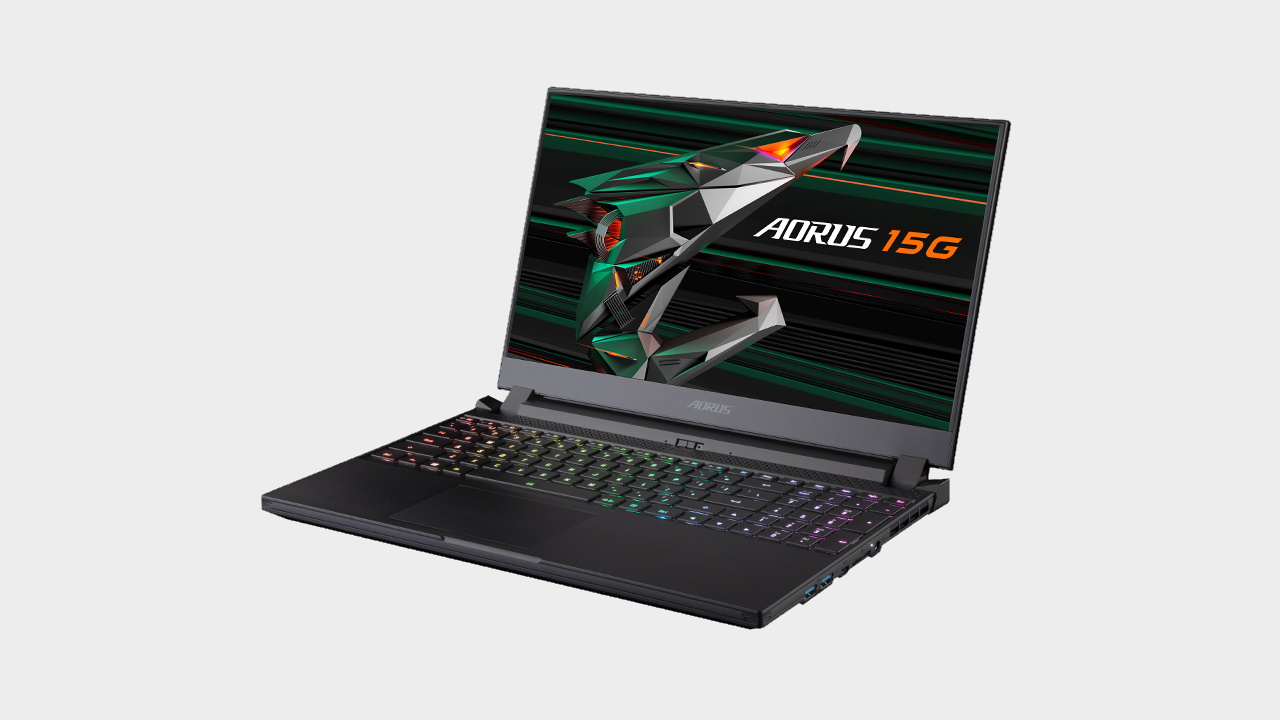
The rest of the specification is pretty much what you would expect for the money, with 32GB of DDR4 RAM, a 512GB PCIe SSD, and a 240Hz 1080p IPS-like screen. The SSD is a bit on the small side for my tastes, especially as gaming installs are now getting so big—there's only just enough room on the drive for our new benchmark suite. 1TB would be our preference here, especially as a machine like this should last you for a few years at least, and we see game installs just getting bigger and bigger.
The screen is excellent though, and the RTX 3070 actually has a decent chance of hitting that 240Hz refresh rate in the games where that actually matters—here I'm primarily thinking of CS:GO and Valorant. Colour reproduction is good, as are the viewing angles, and the bezels are pretty thin on the top and sides too.
This does mean that there's no room at the top for the webcam, which has been placed at the angled edge at the back of the keyboard, which makes for the least flattering video calls ever. Even the lens cover for the webcam feels cheap, and the quality isn't particularly great either, so overall, this is a mark against what is otherwise a well-thought-out machine.
The keyboard is decent and although we've been spoiled by the decision of some laptop manufacturers to squeeze a mechanical keyboard into their svelte forms, there's still plenty to be said for the chiclet-style that can be found here. It's a full-size option, which stretches the width of the machine, and it doesn't suffer the cramp that some layouts have. The arrow keys feel squeezed in without being in any way distinct—definitely not a game-breaker, but it can take a bit of getting used to. This does mean that the 0 (INS) key is not its normal double-width, which may upset spreadsheet junkies, but at least there is a num pad present, which I'll take over the Fn-based gymnastics you usually have to undertake to enter numbers.
The touchpad is a workable option, although as a gamer you're going to want to use a mouse most of the time anyway. The good news here is that the Aorus 15G has plenty of USB ports waiting to accept your necessary peripherals, with a pair of USB Type-A ports on the right-hand side next to the sole USB Type-C port.
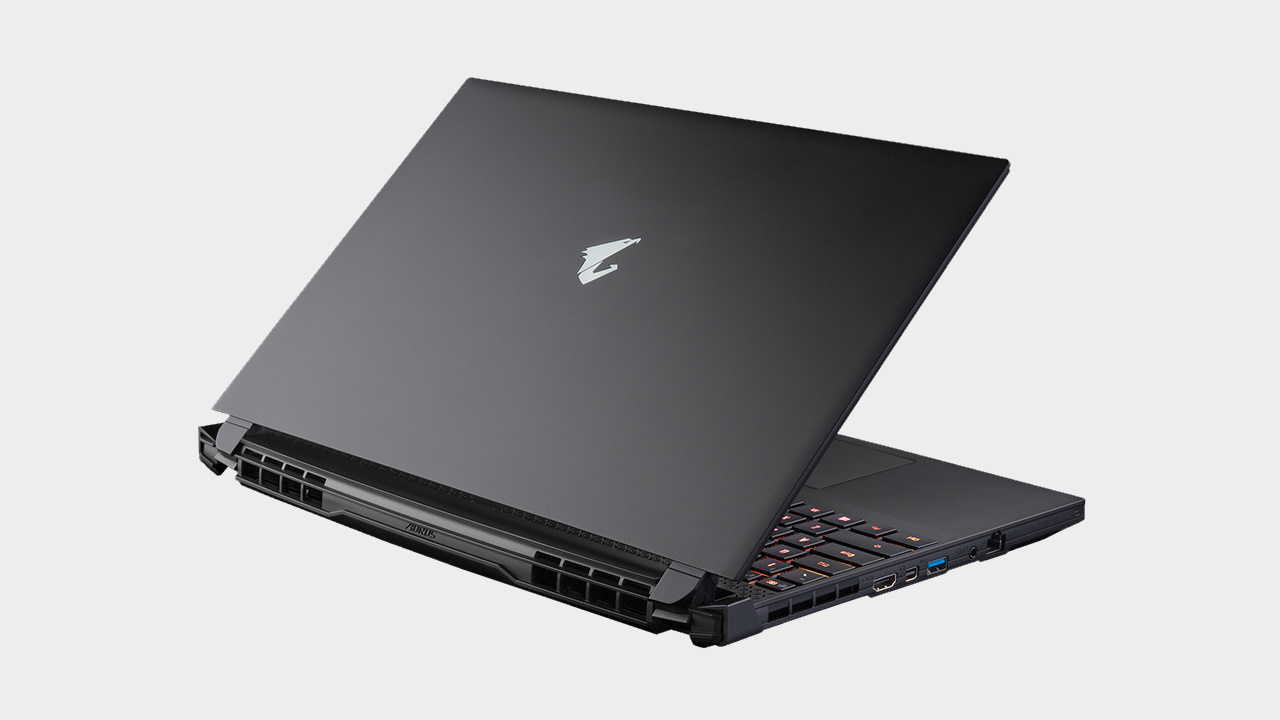
So, time for the important question: Is the Gigabyte Aorus 15G any good at gaming? The short answer is yes. This is a solid gaming machine. While it's going to be lagging behind machines packing an RTX 3080, the fact that Gigabyte has decided to stick with a 1080p panel means that it is capable of hitting smooth frame rates in all the latest games. Which is exactly what you need to hear when dropping $1,800 on a gaming laptop. Even at the highest settings, you're going to enjoy a top-tier gaming experience with this machine.
Gaming performance
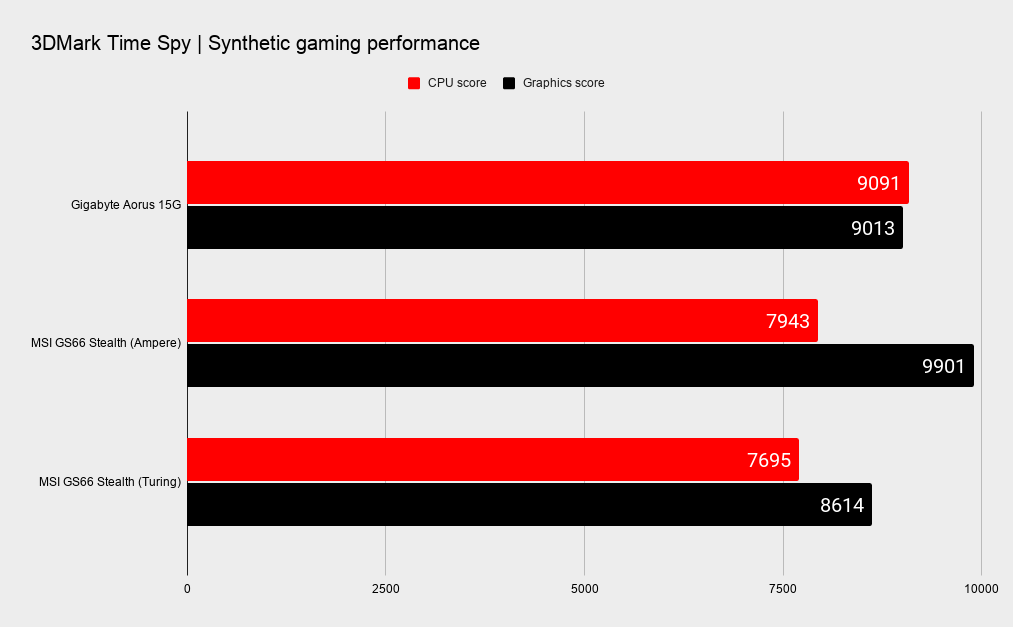
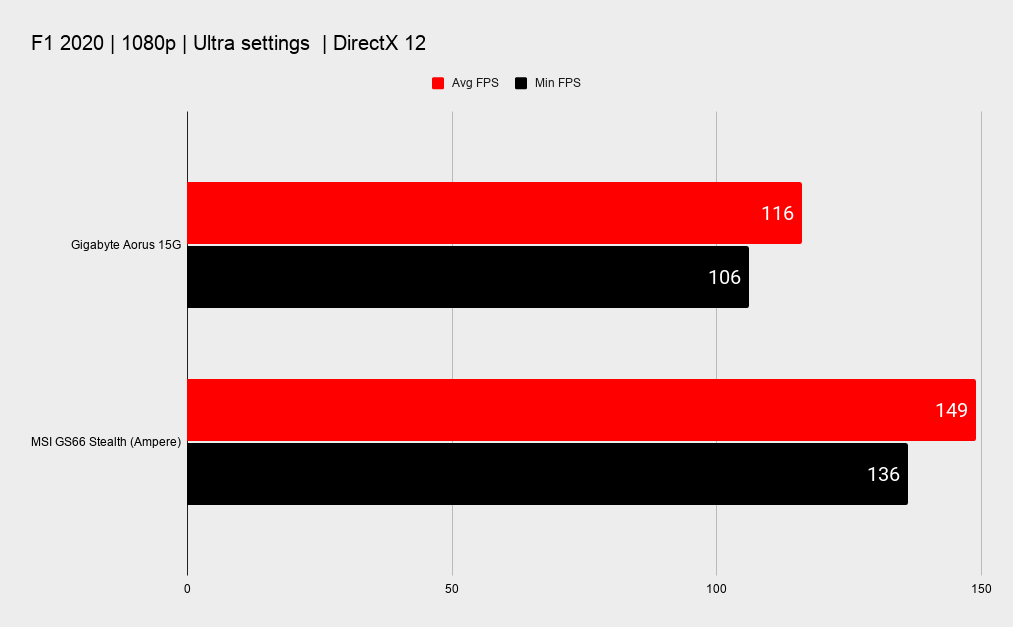
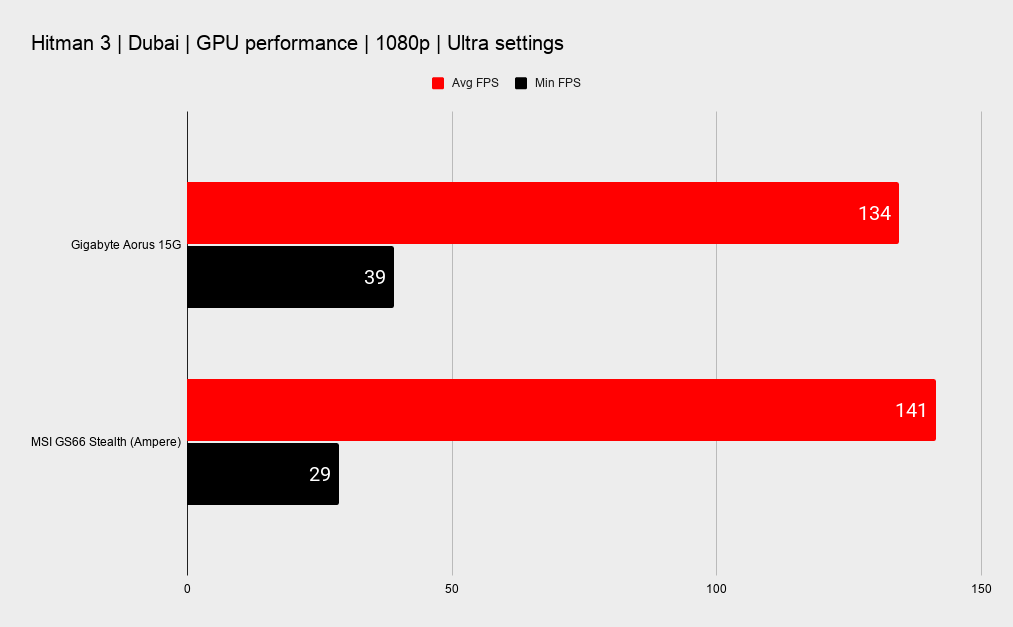
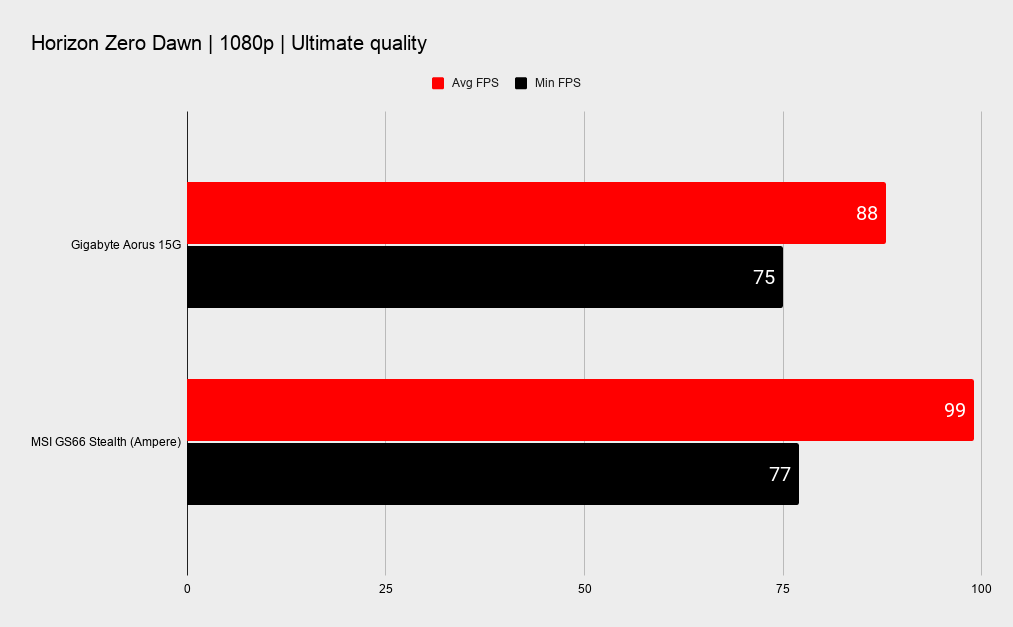
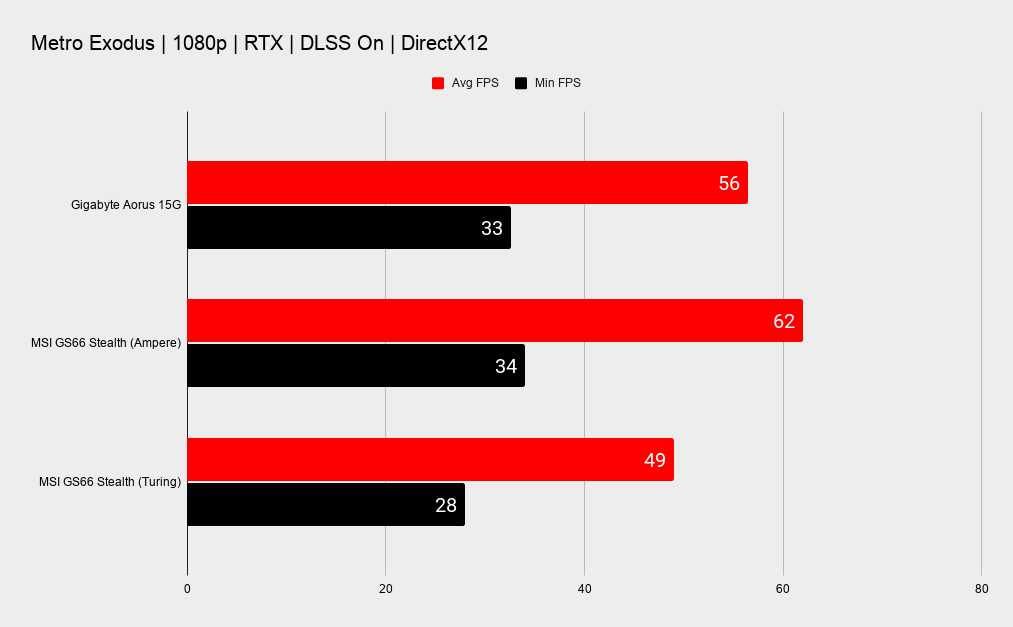
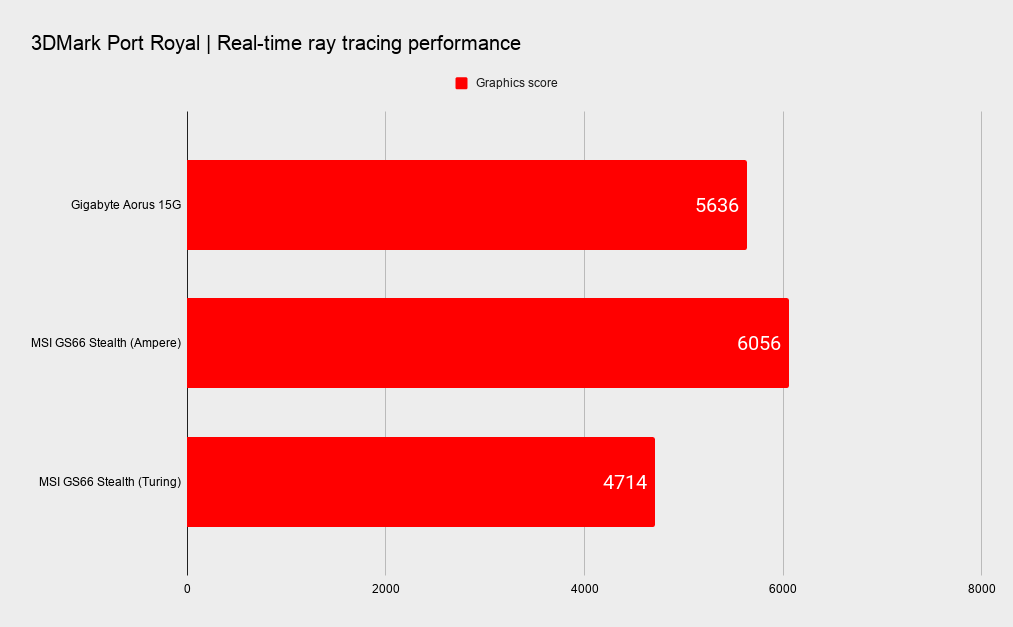
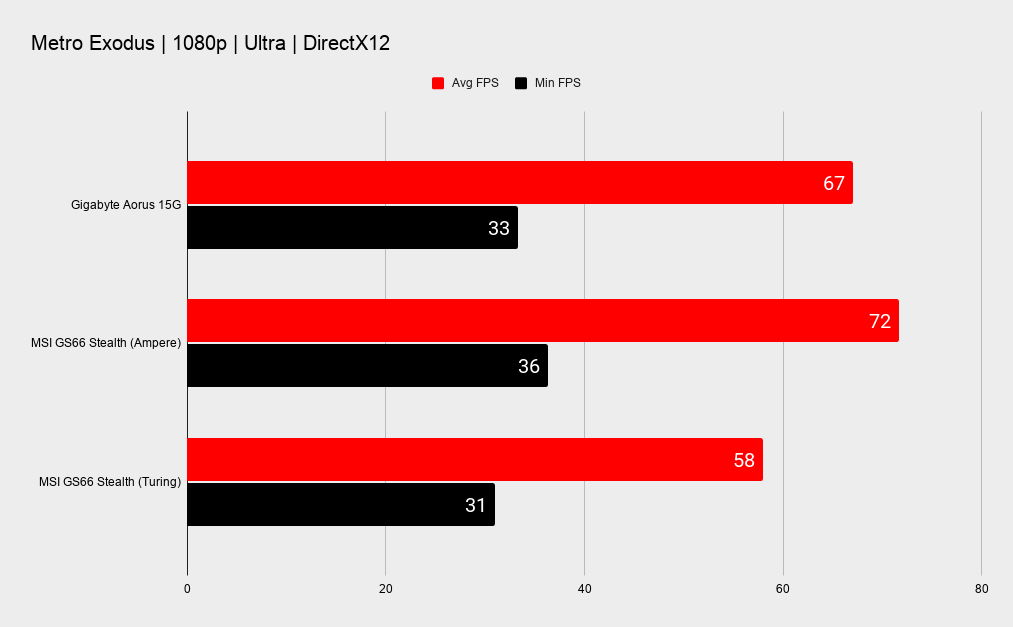
One thing true of the desktop renditions of the RTX 30-series chips was that you could now turn RTX on in your games, and enjoy the lifelike visuals that bouncing light rays around your games can make. Indeed the performance boost from this latest generation meant that you were hitting the same sort of framerates with RTX on, that you would have seen in the previous generation with RTX off.
The good news is that this appears to be the case in their mobile form as well. Taking Shadow of the Tomb Raider as an example, you're looking at an impressive 106fps at 1080p with the shadow quality set to 'Ultra' using traditional rendering techniques. Turn on those accurate ray-traced shadows though, and you'll hit 73 fps, which is roughly what you get with last generation's RTX 2080 without RTX.
In the graphs above you'll see the performance in Metro Exodus with the RTX on and off, compared to the last-gen RTX 2080 Super-powered MSI machine, which proves the point nicely. Basically, yes, you can turn RTX on and still hit super-smooth frame rates. And this is before considering the wizardry that is DLSS 2.0, which will only improve things even further.
System performance
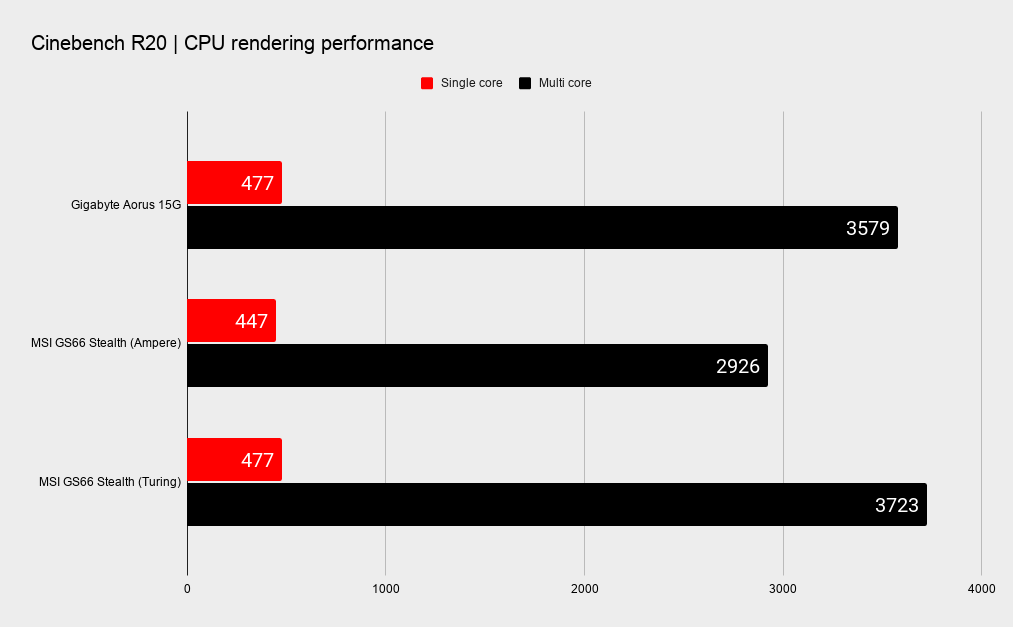
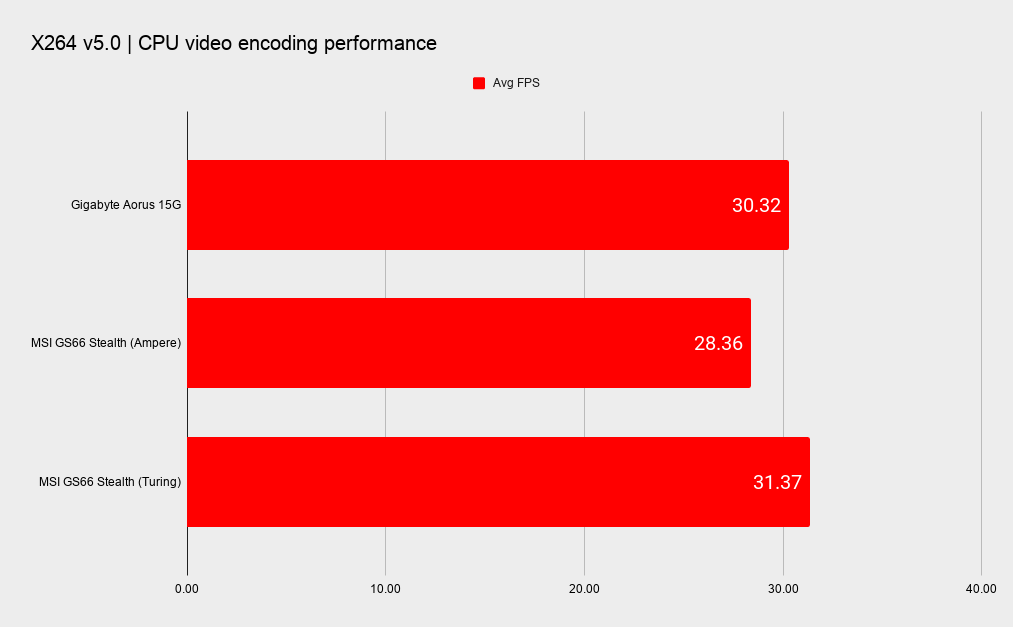
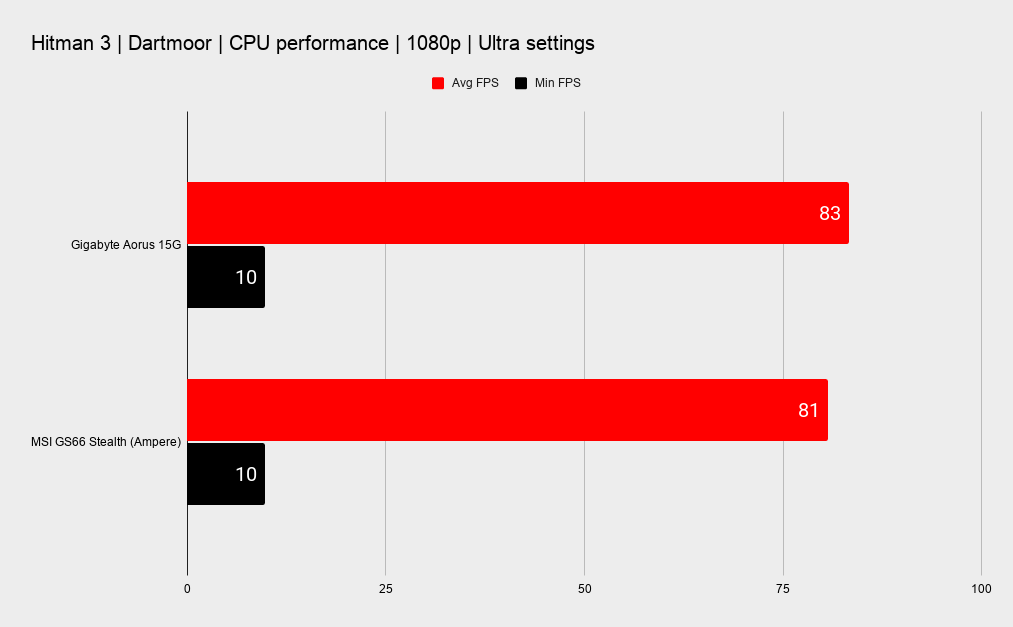
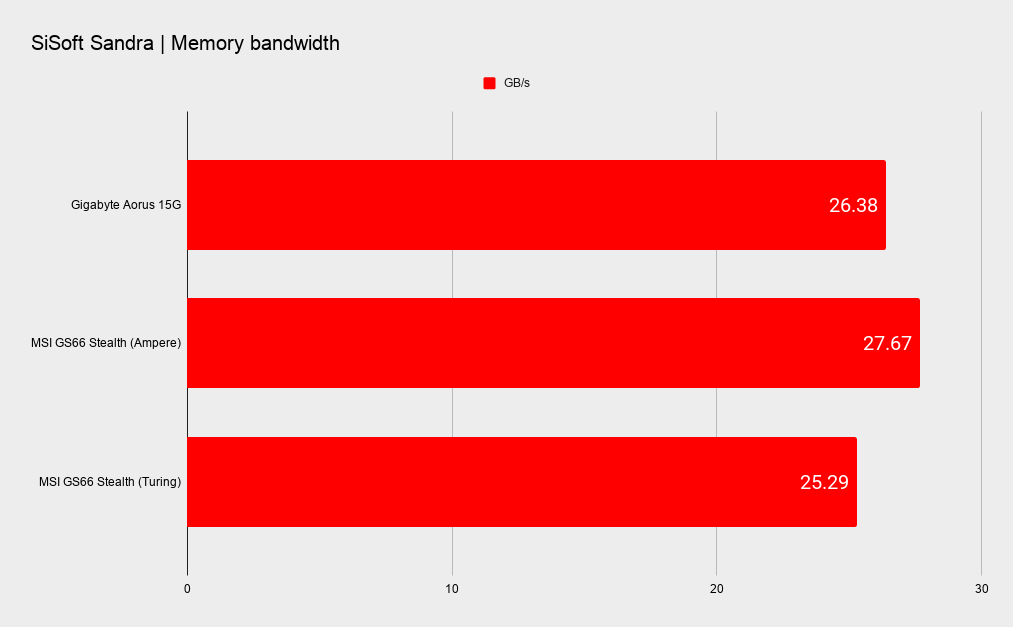
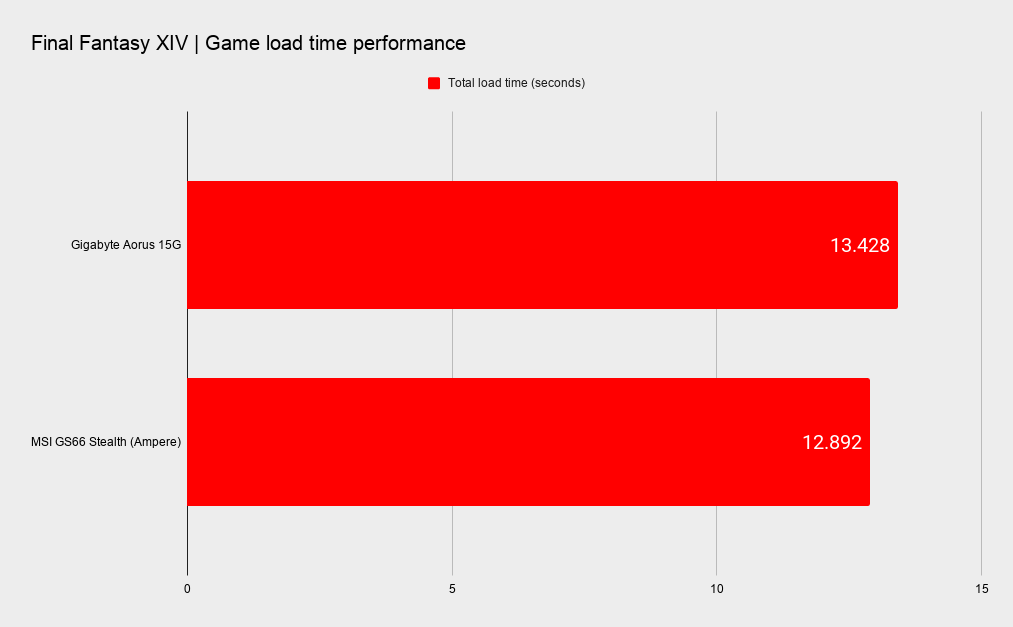
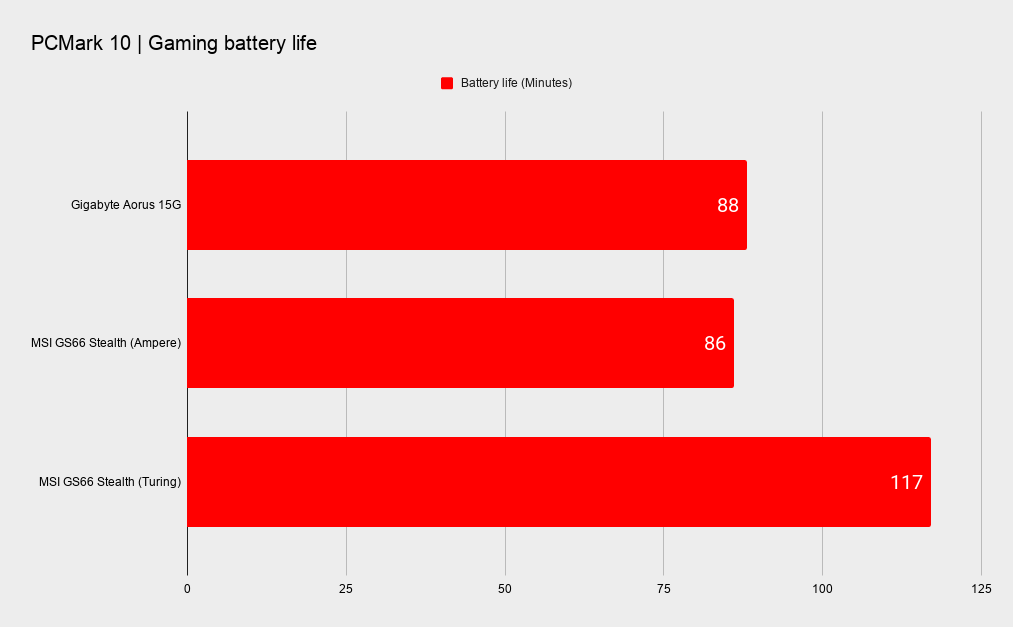
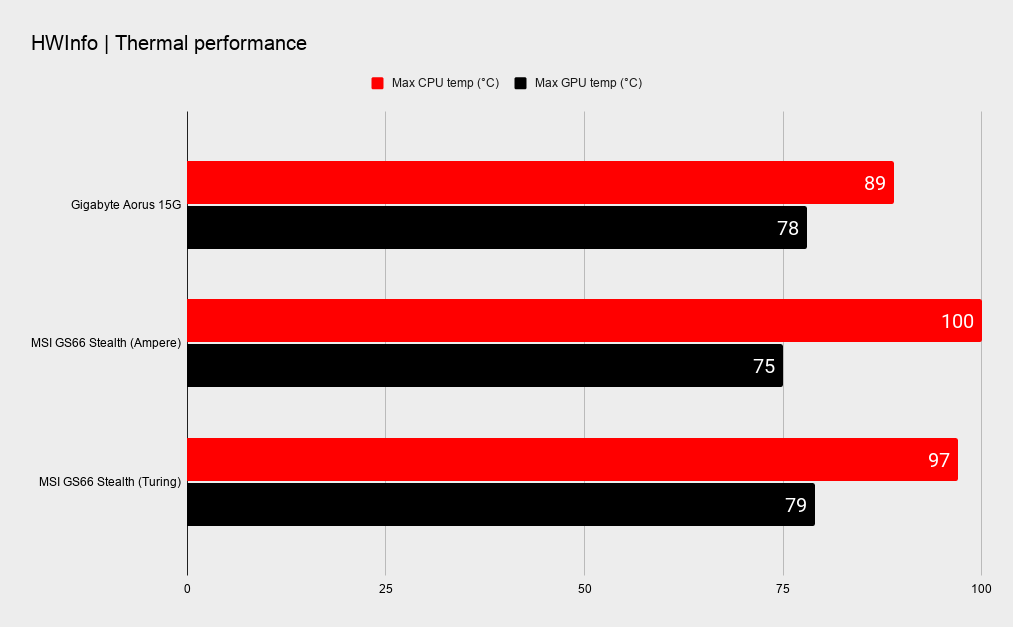
This is an impressive machine when it comes to serious performance too, with Cinebench R20 putting the Aorus 15G ahead of the more expensive MSI GS66. The same is true in terms of video encoding too, with this Gigabyte laptop managing to hit 30fps against the MSI's 28fps. If you're looking to do some serious work when not gaming, then this has the raw horsepower to manage it.
About the only area that is underwhelming is the battery life. If you're trying to game away from a power socket, you're basically looking at around an hour's worth of actual gaming. The laptop may have kept going for just under an hour and a half, but for the last twenty minutes or so the frame rates drop to single-digit levels due to entering a low power state. This is a machine that you're going to want to have plugged in to game basically.
Overall, there's a lot to like about the Gigabyte Aorus G15 XC, with only a couple points against it. The webcam is basically terrible on every level, to the point of us wondering if the machine would be better without it. The battery life is also on the underwhelming side, although if you're looking to watch movies or heaven forbid actually do some work away from a power socket then you'll get a lot more out of it.
Admittedly it isn't as aesthetically pleasing as some of the machines out there, but then it isn't held back by its chassis either. Ultimately though, this machine should be judged on its ability to game, and here it gets a definite thumbs up. While an RTX 3080-powered machine can produce higher framerates, such a system will undoubtedly cost more than the $,1800 being asked for this.
Nvidia's RTX 3070 gets to strut its stuff in this balanced gaming machine that focuses on what matters most, not what simply looks the best.
Alan has been writing about PC tech since before 3D graphics cards existed, and still vividly recalls having to fight with MS-DOS just to get games to load. He fondly remembers the killer combo of a Matrox Millenium and 3dfx Voodoo, and seeing Lara Croft in 3D for the first time. He's very glad hardware has advanced as much as it has though, and is particularly happy when putting the latest M.2 NVMe SSDs, AMD processors, and laptops through their paces. He has a long-lasting Magic: The Gathering obsession but limits this to MTG Arena these days.
